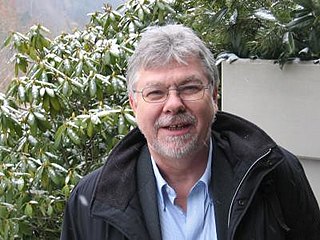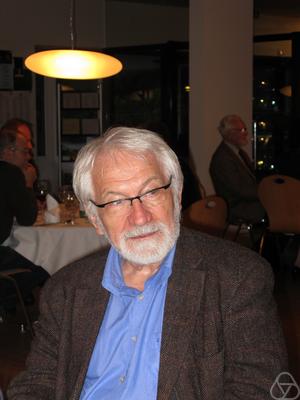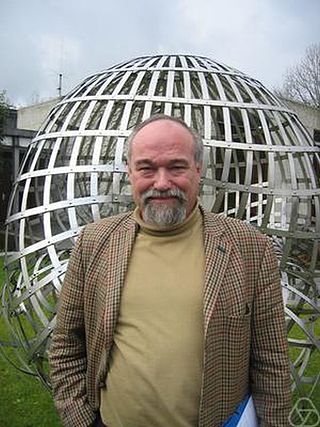Computational archaeology describes computer-based analytical methods for the study of long-term human behaviour and behavioural evolution. As with other sub-disciplines that have prefixed 'computational' to their name, the term is reserved for methods that could not realistically be performed without the aid of a computer.
Computational science, also known as scientific computing, technical computing or scientific computation (SC), is a division of science that uses advanced computing capabilities to understand and solve complex physical problems. This includes

The Courant Institute of Mathematical Sciences is the mathematics research school of New York University (NYU). Founded in 1935, it is named after Richard Courant, one of the founders of the Courant Institute and also a mathematics professor at New York University from 1936 to 1972, and serves as a center for research and advanced training in computer science and mathematics. It is located on Gould Plaza next to the Stern School of Business and the economics department of the College of Arts and Science.
In numerical analysis, a multigrid method is an algorithm for solving differential equations using a hierarchy of discretizations. They are an example of a class of techniques called multiresolution methods, very useful in problems exhibiting multiple scales of behavior. For example, many basic relaxation methods exhibit different rates of convergence for short- and long-wavelength components, suggesting these different scales be treated differently, as in a Fourier analysis approach to multigrid. MG methods can be used as solvers as well as preconditioners.

Mesh generation is the practice of creating a mesh, a subdivision of a continuous geometric space into discrete geometric and topological cells. Often these cells form a simplicial complex. Usually the cells partition the geometric input domain. Mesh cells are used as discrete local approximations of the larger domain. Meshes are created by computer algorithms, often with human guidance through a GUI, depending on the complexity of the domain and the type of mesh desired. A typical goal is to create a mesh that accurately captures the input domain geometry, with high-quality (well-shaped) cells, and without so many cells as to make subsequent calculations intractable. The mesh should also be fine in areas that are important for the subsequent calculations.
Computational mechanics is the discipline concerned with the use of computational methods to study phenomena governed by the principles of mechanics. Before the emergence of computational science as a "third way" besides theoretical and experimental sciences, computational mechanics was widely considered to be a sub-discipline of applied mechanics. It is now considered to be a sub-discipline within computational science.
The Faculty of Mathematics and Computer Science is one of twelve faculties at the University of Heidelberg. It comprises the Institute of Mathematics, the Institute of Applied Mathematics, the School of Applied Sciences, and the Institute of Computer Science. The faculty maintains close relationships to the Interdisciplinary Center for Scientific Computing (IWR) and the Mathematics Center Heidelberg (MATCH). The first chair of mathematics was entrusted to the physician Jacob Curio in the year 1547.

Hans Georg Bock is a German university professor for mathematics and scientific computing. He has served as managing director of Interdisciplinary Center for Scientific Computing of Heidelberg University from 2005 to 2017. Before this, he had been vice managing director from 1993 to 2004. Hans Georg Bock is a member of the European Mathematical Society's committee for developing countries (CDC-EMS) and responsible member for the region of Asia therein.

Andrew Knyazev is an American mathematician. He graduated from the Faculty of Computational Mathematics and Cybernetics of Moscow State University under the supervision of Evgenii Georgievich D'yakonov in 1981 and obtained his PhD in Numerical Mathematics at the Russian Academy of Sciences under the supervision of Vyacheslav Ivanovich Lebedev in 1985. He worked at the Kurchatov Institute between 1981–1983, and then to 1992 at the Marchuk Institute of Numerical Mathematics of the Russian Academy of Sciences, headed by Gury Marchuk.

Willi Jäger is a German mathematician.
Marsha J. Berger is an American computer scientist. Her areas of research include numerical analysis, computational fluid dynamics, and high-performance parallel computing. She is a Silver Professor (emeritus) of Computer Science and Mathematics in the Courant Institute of Mathematical Sciences of New York University. She is Group Leader of Modeling and Simulation in the Center for Computational Mathematics at the Flatiron Institute.
Hans Petter Langtangen was a Norwegian scientist trained in mechanics and scientific computing. Langtangen was the director of the Centre for Biomedical Computing, a Norwegian Center of Excellence hosted by Simula Research Laboratory. He was a professor of scientific computing at the University of Oslo, and was editor-in-chief of SIAM Journal on Scientific Computing 2011–2015.
Aslak Tveito is a Norwegian scientist in the field of numerical analysis and scientific computing. Tveito was the Managing Director of the Simula Research Laboratory, a Norwegian research center owned by the Norwegian Government, and is Professor of Scientific Computing at the University of Oslo.
Vladimir P. Gerdt was a Russian mathematician and a full professor at the Joint Institute for Nuclear Research (JINR) where he was the head of the Group of Algebraic and Quantum Computations. His research interests were concentrated in computer algebra, symbolic and algebraic computations, algebraic and numerical analysis of nonlinear differential equations, polynomial equations, applications to mathematics and physics, and quantum computation with over 210 published articles.

Rolf Rannacher is a German mathematician and a professor of numerical analysis at Heidelberg University.
Joseph E. Oliger was an American computer scientist and professor at Stanford University. Oliger was the co-founder of the Science in Computational and Mathematical Engineering degree program at Stanford, and served as the director of the Research Institute for Advanced Computer Science.
Assyr Abdulle was a Swiss mathematician. He specialized in numerical mathematics.

Hubert Mara is an Austrian Computer Scientist who specializes in Archaeoinformatics and the application of methods from computer science to the humanities, and thus a combination of these fields.








